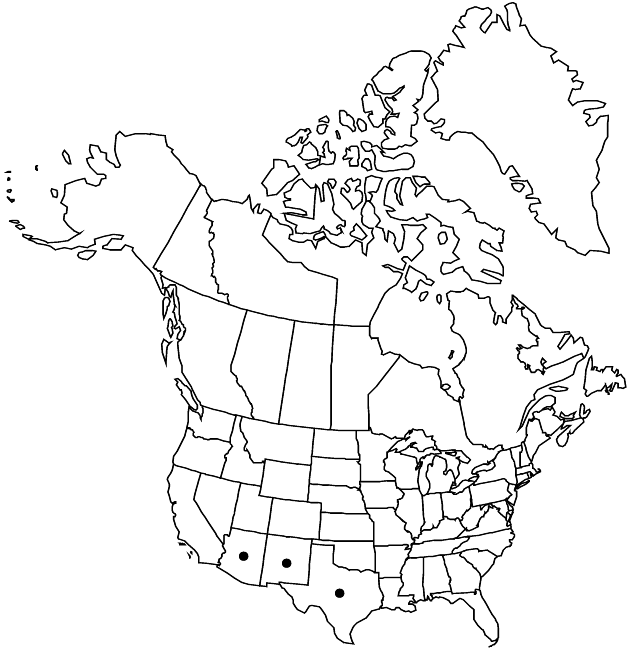Cirsium wrightii
Smithsonian Contr. Knowl. 5(6): 101. 1853.
Biennials or monocarpic perennials, 100–300 cm; taproots short with many slender, fibrous lateral roots. Stems usually 1, erect, glabrous to ± tomentose; branches many, usually restricted to distal part of stem, ascending. Leaves: blades oblong to elliptic, 10–60 × 5–20 cm, unlobed and merely spinulose to irregularly dentate or shallowly to deeply pinnatifid, lobes ± broadly triangular, separated by wide sinuses, obtuse to acute, sometimes coarsely toothed or lobed, main spines slender, 1–3 mm, faces thinly arachnoid, soon glabrescent; basal often present at flowering, petioles slender, ± winged; cauline progressively reduced, proximal petiolate, mid and distal sessile, long-decurrent; distalmost linear to narrowly elliptic, bractlike, spinulose to irregularly dentate or shallowly lobed. Heads many, in openly paniculiform arrays, borne singly at tips of peduncles. Peduncles slender, 1–15 cm. Involucres ovoid to hemispheric, 1–2 × 1–2 cm, thinly arachnoid, glabrate. Phyllaries in 8–9 series, strongly imbricate, green, lanceolate (outer) to linear (inner), abaxial faces with prominent glutinous ridge; outer and middle appressed, bodies entire, apices acute, spines spreading, slender, ca. 1 mm; apices of inner often flexuous, acuminate, flat, scabrid-ciliolate. Corollas white to pink-purple, 19–21 mm, tubes 9–10 mm, throats 4–4.5 mm, lobes 5–7 mm; style tips 2–3.5 mm. Cypselae brown, ca. 4.5 mm, apical collars stramineous, 0.2 mm; pappi 15–16 mm.
Phenology: Flowering summer–fall (Aug–Oct).
Habitat: Springs, seeps, marshes, stream banks, often in alkaline soil
Elevation: 1100–2600 m
Distribution

Ariz., N.Mex., Tex., Mexico (Chihuahua, Sonora).
Discussion
Of conservation concern.
Wright’s thistle occurs from the mountains of south-central New Mexico eastward to the cienegas of the adjacent southwestern Great Plains. Cirsium wrightii is listed by the state of New Mexico as a species of concern. The one known site in Cochise County, Arizona, is apparently historic.
Hybrids are known between Cirsium wrightii and C. vinaceum in the Sacramento Mountains of New Mexico. I have observed hummingbird visits to the heads of both species, though C. wrightii shows none of the apparent adaptations to hummingbirds (P. L. Barlow-Irick 2002) that are seen in such taxa as C. occidentale var. candidissimum, C. andersonii, and C. arizonicum.
Selected References
None.